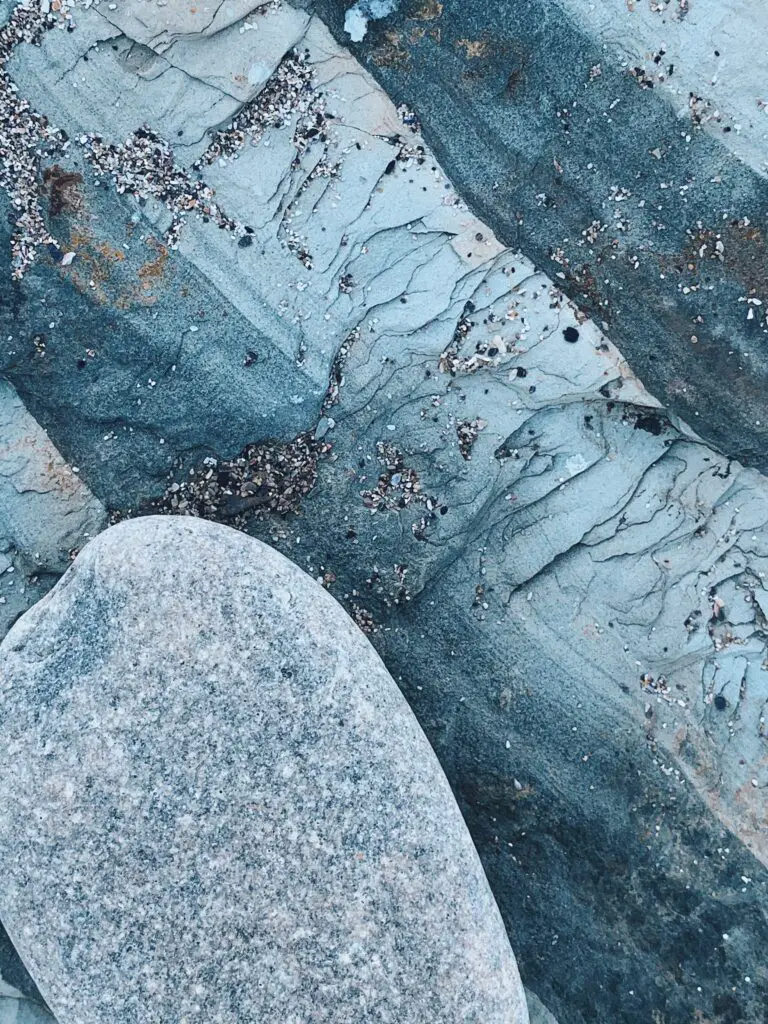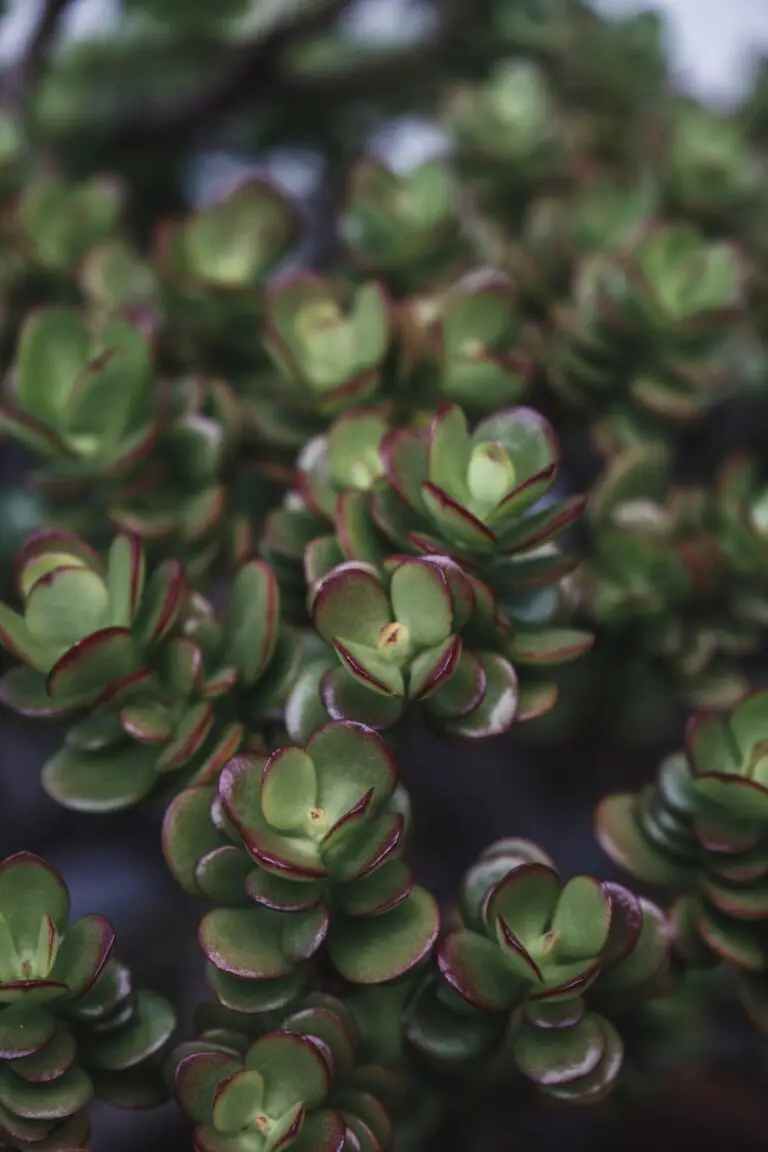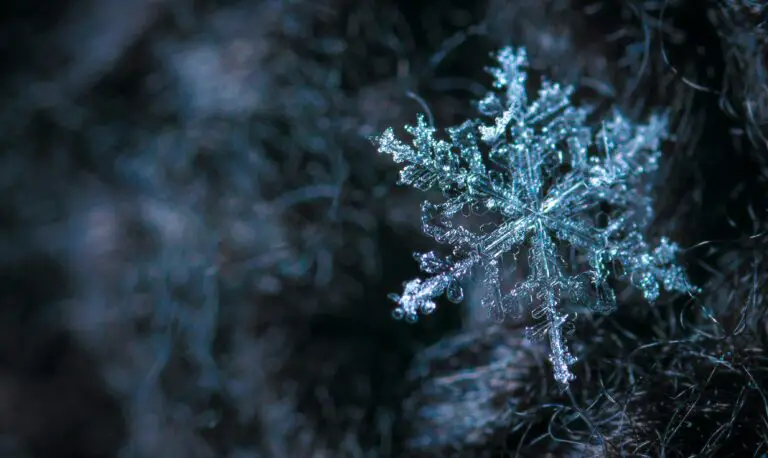Introduction to Crassula Plants
Welcome to the world of Crassulas – the rugged, yet charming family of plants that have captured the hearts of botanists and hobbyists alike! Imagine a plant that is as forgiving as it is elegant, able to withstand neglect, yet flourish with the slightest touch of care. This is the essence of Crassulas, commonly known as Jade plants, whose resilience is only matched by their allure.
Originating from the rocky landscapes of South Africa, these succulent beauties have spread across the globe, embellishing homes with their thick, glossy leaves and robust stems. Diverse in varieties, their species range from the compact Crassula ovata, the proud Crassula arborescens, to the delicate Crassula perforata or ‘String of Buttons’. Each variant carries its own unique charm, proving that the Crassula family is indeed a treasure trove of horticultural gems waiting to be explored.
But what is it about Crassulas that has granted them a prized spot on our windowsills and in our gardens? Beyond their captivating appearance lies a fundamental toughness; these plants are the embodiment of resilience. Unphased by drought, adaptable to a multitude of conditions, and tolerant of indoor environments, they strike an exquisite balance between toughness and beauty. It’s little wonder that general characteristics of Crassula plants are highlighted in discussions among plant enthusiasts.
Speaking of engaging characteristics, why not take a moment to marvel at the practical care of a Mini Jade? This enlightening video provides insight into the nurturing of one of Crassula’s most enchanting varieties:
As we dive deeper in this article, we will uncover whether these hardy specimens can stand toe-to-leaf with Jack Frost. Stay with us as we demystify the cold tolerance of Crassula plants. Are they truly warriors in wintry settings, or is their resilience overrated? Stick around to find out!
Understanding Plant Hardiness
Have you ever wondered why some plants survive icy winters while others perish at the first whisper of frost? It’s all down to plant hardiness – a term that might sound technical but is actually pretty straightforward. And when it comes to Crassula plants, well, that’s a whole frosty discussion to unwrap!
Simply put, plant hardiness measures a plant’s ability to withstand cold weather conditions. It’s the botanical equivalent of a winter coat rating for humans. But instead of fur-lined hoods and thermal layers, we’re talking about a plant’s built-in resilience to frosty temperatures.

The USDA hardiness zones are like a map for gardeners, showing where various plants can flourish without turning into ice sculptures. Each zone is defined by its coldest average winter temperature. Knowing your zone is like being handed a secret cheat sheet that will help you in choosing plants — including those resilient Crassulas — wisely.
But here’s the twist: hardiness doesn’t just come from a plant’s genetic armor. It’s also about location, location, location! A Crassula snugly situated by a warm south-facing wall might scoff at the frost, while its cousin in an exposed yard could be trembling leaf by leaf. And that’s the real-deal example of how hardiness works in the real world.
Understanding plant hardiness isn’t just about keeping your green friends alive; it’s about helping them thrive. And when it comes to Crassula plants, they’ve got a pretty decent reputation for being tough cookies in the face of chilly adversity. But how do they really fare when Jack Frost comes knocking? That’s what we’ll dive into next.
Crassula’s Cold Weather Resilience
When the mercury dips, succulent enthusiasts often ask, “Are Crassula frost hardy?” The answer isn’t a simple yes or no. Crassula, a genus that boasts a plenitude of species, has members with varying degrees of resilience to cold snaps. But let’s unfurl the layers of this frosty puzzle!
Take Crassula ovata, the trusty Jade Plant, often considered a hardy soul in the succulent world. It can generally tolerate chillier nights, but extended exposure to frost? That’s when the stoicism wanes. Imagine a Jade Plant as a rugged mountaineer—adept at braving the cold but never without limits.
Some Crassula species, like the hard-to-miss Crassula Tetragona, can endure light frost with a stiff upper leaf. However, if the frost lingers like an uninvited guest, even these tough guys may succumb. This is why, growing certain Crassula plants indoors during brutal winters is prudent garden wisdom.
Environmental conditions play a huge role in this frosty drama. A sheltered spot, say beneath a leafy tree or near a warm wall, may offer enough reprieve for a Crassula to emerge unscathed from a frosty encounter. Speaking of encounters, here’s a tale of how Crassula plants adapt to cooler climes that’s sure to rivet any succulent aficionado.
So, what’s the verdict? Crassulas can be compared to a varied band of characters, each with their own quirks in facing the cold. Some will tough it out with barely a shiver, others may need a bit more TLC to hold their verdant allure. For a visual guide on safeguarding these succulents, feast your eyes on this informative snippet:
Remember, the key to Crassula’s frost resilience lies in understanding the unique demands of each species and the environment it calls home. With a bit of knowledge and care, these succulents will continue to dazzle, even when Jack Frost comes knocking.
Protecting Your Crassula During Frost
When the temperatures plummet, the plight of our beloved Crassula plants becomes a tangible worry. With a reputation that often leaves them mistakenly pegged as high maintenance, it’s crucial to understand just how frost-resistant these resilient succulents are. So, how do you keep these rugged beauties safe when Jack Frost comes a-knocking? Let’s unravel some practical tips for shielding your Crassula during those chilly months.
First things first, gradual acclimatization is the secret weapon in your Crassula care arsenal. Like prepping for a marathon, your plants need time to strengthen and adapt to colder conditions. Before the winter sets in, expose your Crassula to slightly cooler temperatures each day. It’s akin to training your plant, giving it a fighting chance to withstand short spells of frost without keeling over.
Another effective warrior in the battle against the cold is the trusty frost cloth. Think of it as a cozy blanket for your plant. When a frost warning is issued, draping a frost cloth over your Crassula can be the difference between a plant that survives and a plant that succumbs. This humble piece of fabric can trap heat and ward off the biting chill, granting your green companion a toasty shield against the frigid night air.
Location, location, location! It’s not just a mantra for real estate agents but also a key strategy for Crassula caretakers. Strategic positioning of your Crassula plants during the winter can be a game-changer. Station them in places where they can soak up the winter sun’s weak but valuable warmth during the day. Once the sun sets, move them to a spot sheltered from the wind—a place where the frost is less likely to touch them with its icy fingers.
Now, wouldn’t it be great to see all of this in action? Below is a video that dives into the world of Crassulas and provides insights on care and propagation, two key elements that also contribute to strengthening your plants against the frost. Let’s take a look at this green-thumb workshop:
Remember, these real-life examples aren’t just words; they are tested methods shared by experienced gardeners who treasure their Crassula plants. Embracing these practices will not only prepare your plants for frost but also reconnect you with the natural cycle of care and adaptation. Now, isn’t that what nurturing our green friends is all about?
Recognizing and Treating Frost Damage
When Jack Frost comes nipping, our first thoughts are to cozy up under a blanket, but what about our green friends in the garden, particularly Crassula plants? If you’re a succulent enthusiast, you might wonder, “Are Crassula frost hardy?” Well, it’s time to unwrap some cold, hard truths about these succulent sensations and their ability to face the frigid foe.
Frost damage in Crassulas isn’t always a straightforward diagnosis. Sure, they’re tough cookies in many respects, but even the hardiest of plants has its kryptonite. Imagine a vibrant Crassula, often the star of drought-tolerant landscapes, now looking like it partied too hard in a snow globe. That’s frost damage for you. The signs? Soft, discolored leaves that tell a tale of icy woes. In the grips of winter’s chill, previously perky leaves may droop and darken – a clear distress signal. However, it’s not all doom and gloom; these plants can bounce back with a little TLC and the right approach to recovery.
Treating frost-damaged Crassulas doesn’t require a green thumb degree, just some common sense and gentle care. First, let’s talk triage. If your Crassula has had a bit too much fun in the frosty air, resist the urge to play plant surgeon immediately. Wait for warmer weather to assess the full extent of the damage; sometimes, what looks dire can recover with a bit of patience. Once the plant is in the clear, gently prune away the damaged areas, which could invite unwanted guests, such as fungal infections, if left unattended. And let’s not forget, ensuring appropriate water levels is vital. Overly soggy soil plus cold conditions equals a surefire recipe for root rot.
But what if you suspect your unsuspecting Crassula is heading for a winter weather walloping? Prevention is your best ally. Consider using frost cloths or moving potted friends to sheltered spots when the weather forecast sounds like a horror movie soundtrack. Remember, while Crassulas are quite capable of playing it cool in mildly chilly scenarios, they’re not the fans of a winter wonderland that those adorable conifers are.
Speaking of real-life examples, let’s take a stroll through a scenario. Picture this: a beautiful Crassula ovata, also known as the jade plant, positioned as a sentinel at your front door. It’s thrived all summer, boasting succulent leaves that spark envy in the neighborhood. Then winter descends, and despite the common belief that these plants are as frost-resistant as a Sherpa jacket, you find it withered and weeping icy tears after a particularly brutal frost. This isn’t the end of our chlorophyll-filled protagonist; with the aforementioned steps, it can return to its former glory, ready to make the neighbors green with envy once more.
Why not see these resilient beauties in action? Here’s a video that provides insight into the care of the enduring Crassula, including how to navigate the chilly challenges they might face:
By following these tips and keeping a watchful eye on the mercury, your Crassulas will thank you by surviving the winter’s bite to flourish another day. So, next time Jack Frost rears his frosty head, you’ll be ready to protect your precious Crassulas from his chilly embrace.
Ideal Growing Conditions for Crassula
Ever wondered where Crassula plants thrive the most? Let’s dig into the succulent world of Crassulas and find out just what it takes to make these charming plants flourish. It’s not just about dumping them in soil and hoping for the best—Crassulas have certain ‘likes’ and ‘dislikes’ when it comes to their environment. Redirect that green thumb energy into crafting the picture-perfect setting for your Crassula, and watch it repay you with vigorous growth—and who knows, maybe even some enviable blooms!
First things first, temperature is pretty much the DJ at the Crassula party. These plants love it on the warmer side but don’t sweat it—they won’t throw a tantrum if things cool down a little. In fact, Crassulas are semi-frost tolerant, but they sure won’t be winning any polar bear plunge contests. Think cool Mediterranean evenings rather than a Siberian winter. Keep the mercury above 30°F (-1°C), and your Crassulas will keep up their end of the deal.
Now, let’s shine some light on the subject—literally. Light is like Crassula’s bestie. A good dose of sunshine keeps these plants perky, but they’re not sun worshippers. A spot where they can bask in bright, indirect light will have them stretching tall and proudly showing off their lush leaves. Too much direct sunlight? That’s a no-no; these plants can sunburn just like you and me, and nobody wants a crispy Crassula.
Here’s a real-life nugget for you: Imagine a Crassula living its best life in a sun-dappled courtyard, soaking in that golden hour glow yet sheltered from the harsh midday sun. That’s the sweet spot! Be that courtyard for your Crassula, and it will grow happily ever after.

Beyond just temperature and light, your Crassula’s comfort also depends on its soil bed. Think about it like this: if Crassulas were humans, they’d be the adventurous, hiking types. They like their ground lean and well-drained—none of that soggy, muddy trail business. A mix that’s one part organic matter and one part grit is like luxury bedding to them; it’s breathable and mimics their natural rocky habitats.
There you have it—a trifecta of temperature, light, and soil that forms the dream home for your Crassula. Keep these in check, and you’re not quite playing God, but you’re definitely the next best thing in the eyes of your leafy friends.
Winterizing Crassula Plants: Indoor vs. Outdoor Strategies
When Jack Frost is nipping at more than just your nose, it’s time to consider how your green companions, specifically Crassula plants, will fare through chilly weather. Are Crassula plants frost hardy? Let’s dig into the indoor and outdoor winter strategies that will keep your succulents smiling through the snowflakes.
Embrace the Great Indoors: Crassula’s Cozy Haven
Indoor winterizing for Crassulas is like preparing for a snuggly hibernation. Start by finding a bright spot—a south-facing window is the plant’s winter sunbathing spot of choice. Remember, though they’re sturdy, these succulents are not fans of the cold draft. Keep them away from leaky windows or doors that could expose them to frosty air. Consistent temperatures and a drop in watering frequency to match their slowed growth will ensure that your Crassulas remain robust and ready to burst back into life come spring.
The Great Outdoors: A Risky Affair
Growing Crassula plants outside in frost-prone areas is like taking a gamble with Mother Nature. Even the hardiest of the Crassula clan can only withstand brief and mild frosts. If the mercury plummets regularly, consider adding a layer of mulch for insulation or use frost cloths as a cozy blanket during the coldest nights. However, the best bet might be to relocate your potted friends to a protected area like a porch or even better, inside your home.
To give you a clearer picture, let’s envision a scenario. Imagine your outdoor Crassula like a camper in the wild—the right gear can make all the difference between a tale of survival and a frostbitten disaster. Your strategic planning, such as covering your plants at dusk and uncovering them when temperatures rise, will play a crucial role in their winter resilience.
Here’s an insightful video that discusses how to care for succulents, including Crassulas, in winter both indoors and outside. Although it doesn’t address Crassula specifically, the care tips are highly relevant and can help you navigate the colder months with your succulent companions:
No matter where you choose to winterize your Crassula, always remember that these succulents are more than just decorative—they’re living entities that require our understanding and care to thrive in the face of frost. With these strategies in hand, you’re equipped to protect your Crassula plants from Jack Frost’s icy embrace!
Case Studies: Frost-Tolerant Crassula Varieties
Gardeners often wonder if they are pushing their luck with Crassula plants in frosty conditions. As it turns out, some Crassula varieties have a hidden superpower—they can stand up to the cold better than others! Let’s delve into some real-life examples where these succulents shrugged off Jack Frost with grace.

Take for instance the Crassula ovata, commonly known as the Jade Plant. There’s this heartwarming tale of a robust Jade Plant from a quaint English garden. According to the owner, the plant survived a harsh winter night that left the mercury plummeting to 20°F. Come morning, the Jade’s glossy green leaves were still basking in the wintry sun, none the worse for wear!
Moving over to the rugged landscapes of the American Southwest, the Crassula ‘Morgan’s Beauty’ made headlines among cacti enthusiasts. A particular specimen was reportedly basking in the glory of surviving multiple frosts, its plump, silvery leaves undamaged by temperatures as low as 25°F. It seemed to wear the frost like a sparkling accessory rather than a threat.
Then there’s the story of the Crassula arborescens, or the Silver Dollar Plant, from a coastal Californian town. Nestled against the backdrop of the Pacific, these plants faced a surprise frost spell. Many gardeners fretted over the fate of their beloved succulents. Yet, as the icy dawn broke, gardeners were met with an astonishing sight—the Silver Dollar stood tall and unfazed amidst its chilly blanket.
These anecdotes illustrate that some Crassula species, indeed, pack a punch when it comes to frost tolerance. It’s not just hearsay; it’s about survival stories etched in the ice-cold heart of winter, proving that when the temperatures drop, certain Crassulas rise to the occasion.
Myths Debunked: Common Misconceptions about Crassula and Frost
When it comes to garden gossip, the resilience of Crassula against frost is a hot topic that’s often wrapped in a blanket of misinformation. Let’s unravel some of these myths and get to the root of the matter by looking at what science and experience tell us about the frost tolerance of these succulent beauties.
Myth #1: Crassulas are Indestructible in Frost

One common tall tale is that Crassulas can laugh in the face of Jack Frost without a shiver. The truth? While some Crassula species exhibit a degree of frost-hardiness, likening them to ice warriors is a fantasy. In reality, most Crassulas are best suited to mild climates and can only tolerate light, brief frosts. A prolonged icy onslaught will usually result in some drama for our fleshy friends, often leaving them damaged or defeated.
Myth #2: The Thicker the Leaves, the Better the Frost Resistance
Thickness ≠ toughness! Many assume that Crassulas with thicker leaves are better equipped to endure frosty nights. However, leaf thickness does not necessarily correlate with frost resistance. Some thin-leaved species may surprise you with their resilience, while some of their thicker-leaved cousins could be more vulnerable to cold snaps. It’s all about the intrinsic characteristics of each species, not just leaf girth.
Myth #3: Crassulas Need Frost to Thrive
Ever heard the one about Crassulas requiring a good freeze to flourish? Let’s clear the air: while a slight chill might trigger some Crassulas to show vibrant colors, suggesting they need frost to thrive is like saying humans need to walk barefoot on snow to feel alive. Sure, a little cold can be invigorating, but a hard freeze is more likely to be a death knell than a wake-up call for these succulent specimens.
Myth #4: All Crassulas are Created Equal in Frost Tolerance
Grouping all Crassulas into a single frost-tolerant family is a myth ripe for busting. The Crassula genus is diverse, with each species having its own level of cold tolerance. Some might snuggle down and survive a frosty evening, while others will succumb to the chill. It’s important to know the specific needs and limits of your Crassula variety rather than relying on catch-all assumptions.
In the quest to protect your Crassulas from frost’s icy grip, remember to arm yourself with knowledge rather than myths. Understanding the frost tolerance of your particular Crassula species is key to ensuring they remain happy, healthy, and above all, alive, in their pot or garden patch.
Frequently Asked Questions
When it comes to gardening, knowing the resilience of your green companions can be the difference between a thriving oasis and a winter wasteland. Crassula, the plucky succulent, faces whispers and rumors about its ability to stand against Jack Frost’s embrace. So, let’s put on our detective hats and sift through the icy facts to uncover the truth about Crassula’s frost hardiness.

Can Crassula survive a winter chill?
Imagine a succulent, basking in the gentle winter sun, when suddenly, the temperature plummets. Can Crassula hold its ground against the cold? The answer isn’t a simple yes or no. Most Crassula plants can tolerate cool temperatures but might throw in the towel when faced with a hard freeze. It’s like us donning a sweater for autumn’s nip, but shivering hopelessly without a coat during a snowstorm.
What’s the lowest temperature Crassula can handle?
Picture this: a riveting game of limbo where the bar is the mercury in a thermometer. Crassula steps up, bends back, and how low can it go? Generally, temperatures dipping just below freezing, around 28-32°F (-2 to 0°C), are the limbo bar Crassula can (sometimes) gracefully shimmy under. Below this, and our succulent friend might start singing the blues.
Are there Crassula varieties more resistant to frost?
In the great lineup of Crassula varieties, some are like the burly polar bears of the succulent world. Crassula ovata, also hailed as the classic Jade Plant, has a reputation for being more frost-tolerant. Imagine it wearing an invisible, cozy blanket, while others might need an extra layer or protection. Keep an eye out for the ‘Hulk’ in the Crassula family if you live in a cooler climate.
How to protect Crassula from frost?
Envisage a knight in shining armor, but instead of rescuing a damsel in distress, it’s shielding our Crassula from the cruel frost. Providing some form of cover or moving them indoors when the weatherman predicts icy nights is akin to giving our succulent a protective embrace. A toast to being a gallant garden guardian!
From the warmth of our hearts to the tips of our green thumbs, we must embrace the cold truths and myths surrounding Crassula’s frost hardiness. Like marshaling a battalion against winter’s assault, understanding and preparedness are our best defense. Armed with this knowledge, may your Crassula thrive and show resilience, come frost or freeze.



